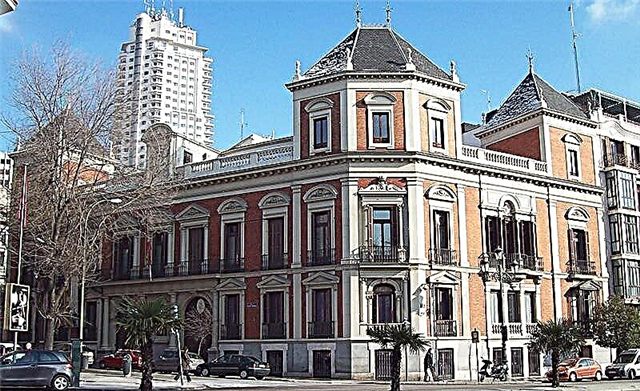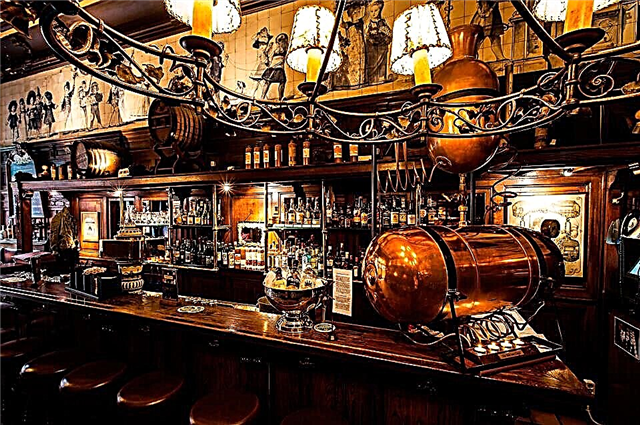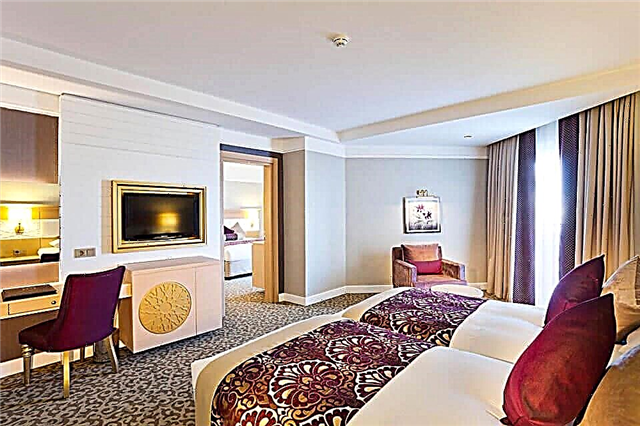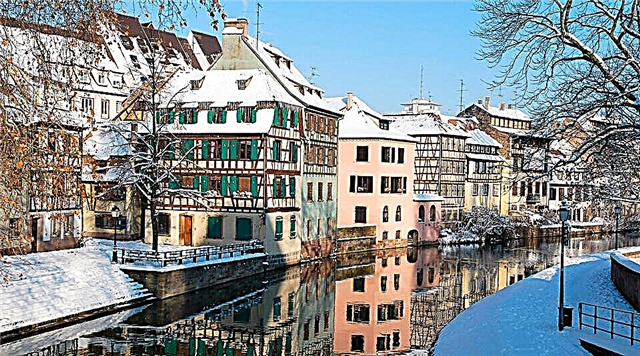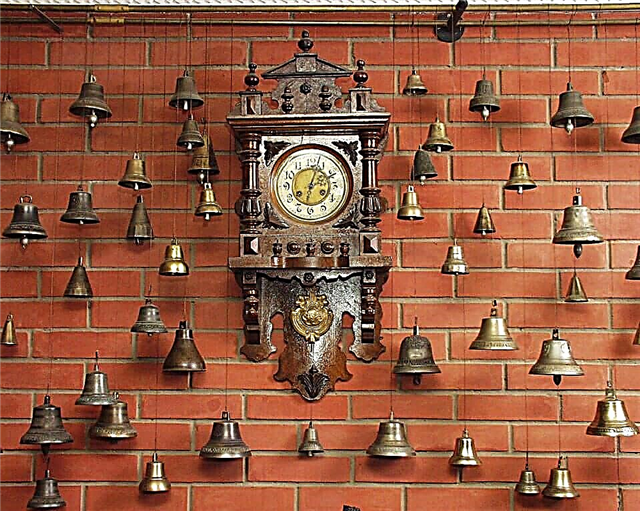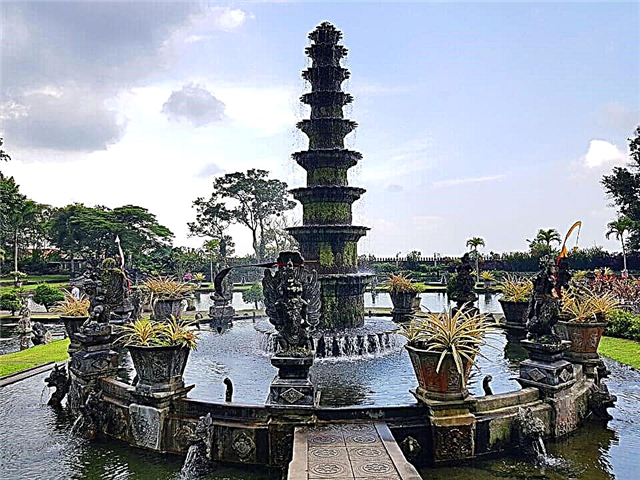Tirta Gangga Water Palace in Bali is a place that will appeal to both children and adults. Here you can not only pleasantly relax and swim, but also watch colorful Hindu rituals. The park is recommended to visit when the beach holiday has set the teeth on edge: a walk will distract from the ocean and give a lot of impressions. And the kids will be happy to feed the tame goldfish.
Construction history

Fresh water is rare in Bali. Therefore, when the last Raja Ketut discovered a large spring, which, in addition, made its way through the roots of the sacred tree, he immediately declared the key to be healing. Raja Agung was an educated person: he studied the profession of an architect in Holland. In addition, he cared about the well-being of his subjects (a great rarity for those in power at that time), so the enlightened monarch decided to build a residence for the rest of his family, and for the people - to ensure regular irrigation of the land.
Large-scale work began in 1946. By 1948, construction was mostly completed. The family of the ruler received a new place for rest, the surrounding peasants - water for planting rice. Even the city of Amlapuru began to be supplied with fresh water. Unfortunately, the idyll did not last long: in 1963, the eruption of the Agung volcano, which (intermittently) lasted 10 months, almost completely destroyed the ensemble. And what withstood the onslaught of the elements was plundered by “grateful” local residents.
Raja Ketut tried to rebuild the unique complex, but by that time he was strapped for funds. The work was carried out slowly. And in 1966, the last monarch of the island died, and the restoration ceased. Only by the beginning of the 80s of the twentieth century was it decided to continue the restoration. It was carried out already on voluntary donations. By 1990, major restoration activities were carried out, but work continues today.
Architecture

The last Raja Ketut became the architect of Tirta Ganga, so the complex is characterized by a mixed style: traditional Balinese and Chinese. Tourists see the temple as a composition of:
- a lush garden of well-groomed trees and shrubs
- a system of ponds connected by bridges and paths made of stones
- fountains, often completely unexpected
- statues of demons and animals
The temple complex is made in the traditional Hindu style: it has 3 terraces:
- Demons live on the lowest terrace: this is their world. In order for the entities to live comfortably, a garden and swimming pools were built for them. The ponds are inhabited by fish; it is easy to cross the ponds along the bridges. Everywhere there are statues of demons and animals. There is a water tower from the outbuildings.
- The next terrace is given to people. Here the ponds are for swimming. True, water procedures require an additional fee. But the locals claim: the water in the pools is curative, because it flows from a sacred spring. Some tourists claim that the water is cloudy.
- On the upper terrace there is the ruler's palace and the area for performing rituals. The place is dedicated to Shiva, Brahma and Vishnu. There are sacrificial sites and prayer rooms here.

The interpretation of the name is interesting. Tirta means “sacred water,” and the Ganges is the embodiment of the heavenly river, which the god Shiva brought to earth. Thus, the sacred waters of the heavenly river are given to believers for a happy life. It is noteworthy that the complex leaves the feeling of an ancient building: everything is covered with soft emerald moss. Therefore, it seems that there was a trip in a time machine thousands of years ago.
What to see

It's nice to just walk around the complex: the systems of paths and bridges allow you to go from place to place endlessly. A shady garden with outlandish trees beckons with coolness. But deserve special attention:
- Colored fish in the pools on the first level. These are Koe carps brought from Japan. The length of an adult fish is 0.9 m, and it can cost thousands of dollars. The fish are always hungry and almost tame: they swim up and grab food from their hands. In order to please the animals, you should buy bread, which is sold at the entrance. Or you can cook in advance and bring food with you.
- Paths of stones, laid flush with the water. The impression is that you are walking on the surface of the pool. Coe carps are hovering almost underfoot. Locals say that if you walk in a strictly defined sequence, then all your wishes come true. True, in which one, they do not report.
- Fountain Nava Sanga. The structure has 10 bowls, which rise one above the other. It is dedicated to the god Sang Hyang Vidi, the keeper of the sacred water. The fountain is the center of the composition, made in the tradition of the Ramayana. Around the central figure of the guardian are gods of lower rank.
- Another fountain, which is made in the form of a boar, is the earthly embodiment of the man-eating demon Rakshasa. It seems that not water, but saliva flows out of his mouth. A terrifying figure guards the precious water: the gods created such a monster to protect the sacred moisture from the kidnappers.
- Swimming pools. It is especially pleasant to visit them during the hot part of the day. But it is important to remember: it is still cold to dip in the early morning. By the way, bathing on the full moon will give eternal youth. But technically this is hardly feasible: it is forbidden to stay in the territory after the closure.
- Nearby rice fields. There is an opportunity to observe how a famous plant is being cultivated. There are few tourists here, so the walk will be calm.
- It is interesting to evaluate the water supply system of the complex as a whole. The main part goes to the city of Amlapuru: this is drinking water for residents. Then the pools with fish and those used for swimming are filled. The contents of the baths are regularly updated: dirty water is pumped into the rice fields. For a competent water supply, a system of a tower and underground drainpipes was built.

The complex has a restaurant with a hotel. This is the property of the heirs of the last ruler. If you wish, you can have a snack and stay overnight. The descendants of the Rajah work conscientiously: the reputation of the institution is expensive.
INAYA Putri Bali
Bali
Located along the beach in the tourist area of Nusa Dua

Hard Rock Hotel Bali
Bali
Rock 'n' roll styled next to Kuta Beach

Munduk Moding Plantation Nature Resort & Spa
Bali
Luxury suites and villas

Udara Bali Yoga Detox & Spa
Bali
It offers an outdoor pool and other amenities

Amnaya Resort Kuta
Bali
It offers an outdoor pool and other amenities

Travel tips before visiting

Basically, the complex is visited by local residents: they conduct rituals, pray; there are few tourists. There are no specific rules to follow. However, the overly defiant behavior of the guests causes rejection of the aborigines. In addition, it should be noted that:
- during the examination, you will have to spend most of the time in the open sun: you will need a protective cream and a hat
- you should start examining the complex early, while it is not hot
- swimming in the morning hours is cold: it is better to wait for noon, the water will warm up
- sometimes the water in the bathtubs seems cloudy: this means that it is dirty and will soon be replaced with a new one
- it is very hot in the rice fields: an umbrella from the sun will help
- if swimming is planned, then you should take swimming trunks or a swimsuit
- it is recommended to reserve a certain amount for the purchase of fish food and a visit to the swimming pool (payment is not included in the entrance ticket price)
- if you plan to attend a festive ceremony, you should girdle a sarong
- the inspection should be completed before closing: it is forbidden to stay on the territory after the closure of the temple

Due to the remoteness of Tirta Gagna from the main excursion routes, it is recommended to combine the trip with additional sightseeing, for example, Tirta Lempuyanga.
Opening hours and ticket prices
The complex is open to tourists from 8 am to 6 pm. An adult will need to purchase a ticket for 30 thousand rupees. A walk around the temple will cost a child 15,000 rupees. Swimming in the pool is also paid: 20 thousand rupees.
Where is it located and how to get there

Tirta Ganga is a complex remote from the visited places. It is closest to the city of Amlapur: it is only 8 km away. You can try to take a bus from the resort village to Candidasa, and from there take a regular bus to Ampalura. However, due to the small flow of passengers, there is no regular bus service with Ampalura. Therefore, it is recommended to check the day and time of departure in advance. And the last 8 km to the temple will have to walk or try to catch a ride. Traveling on a rented bike or car is considered more comfortable. When planning a route, you need to use a navigator. You can park in the paid parking lot at the complex (1 thousand rupees).

